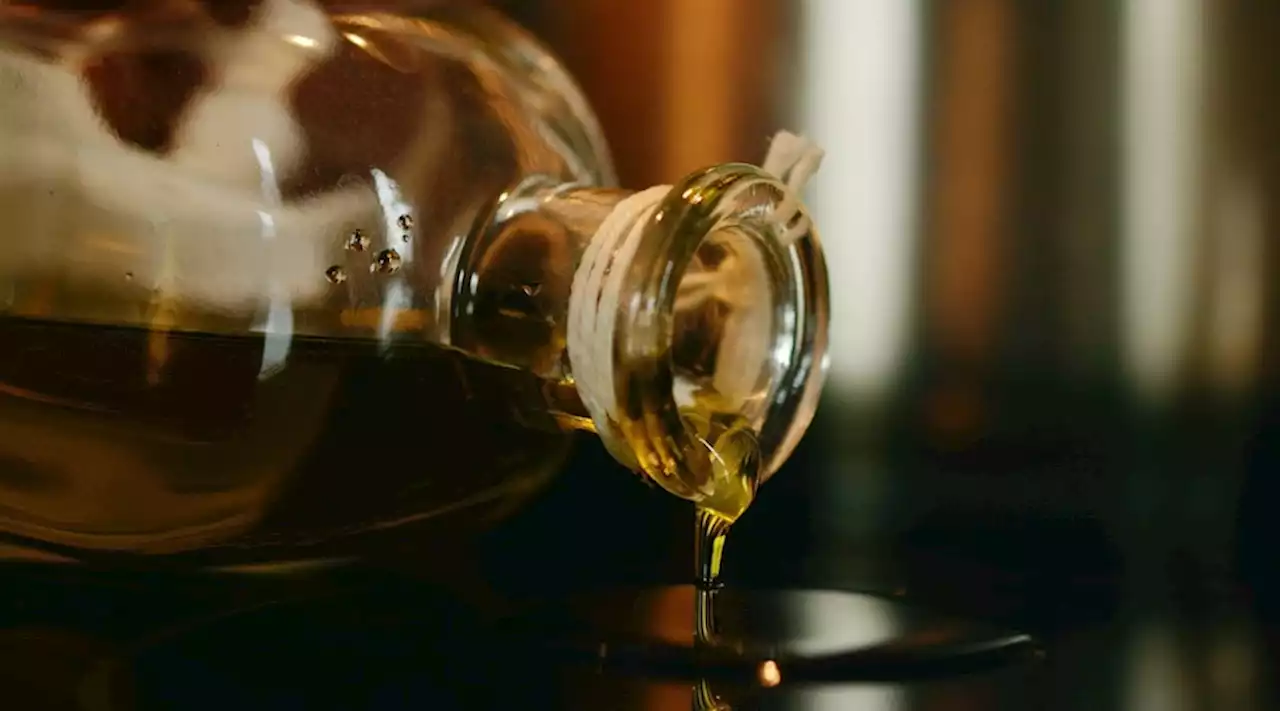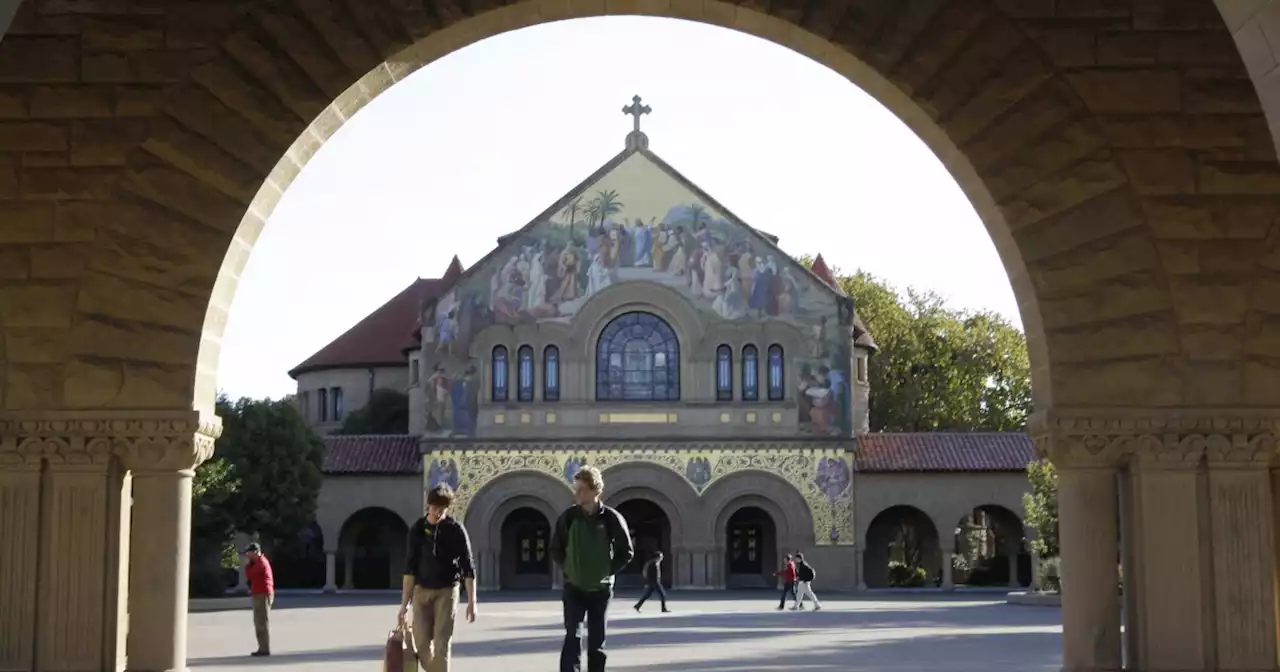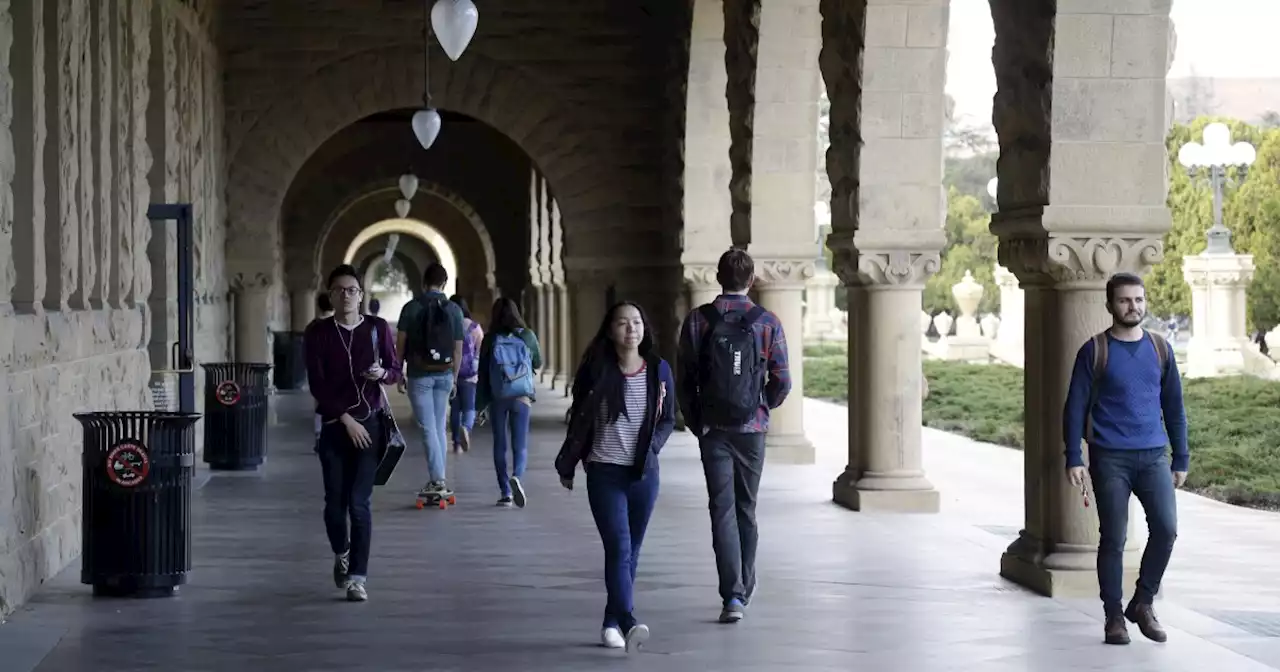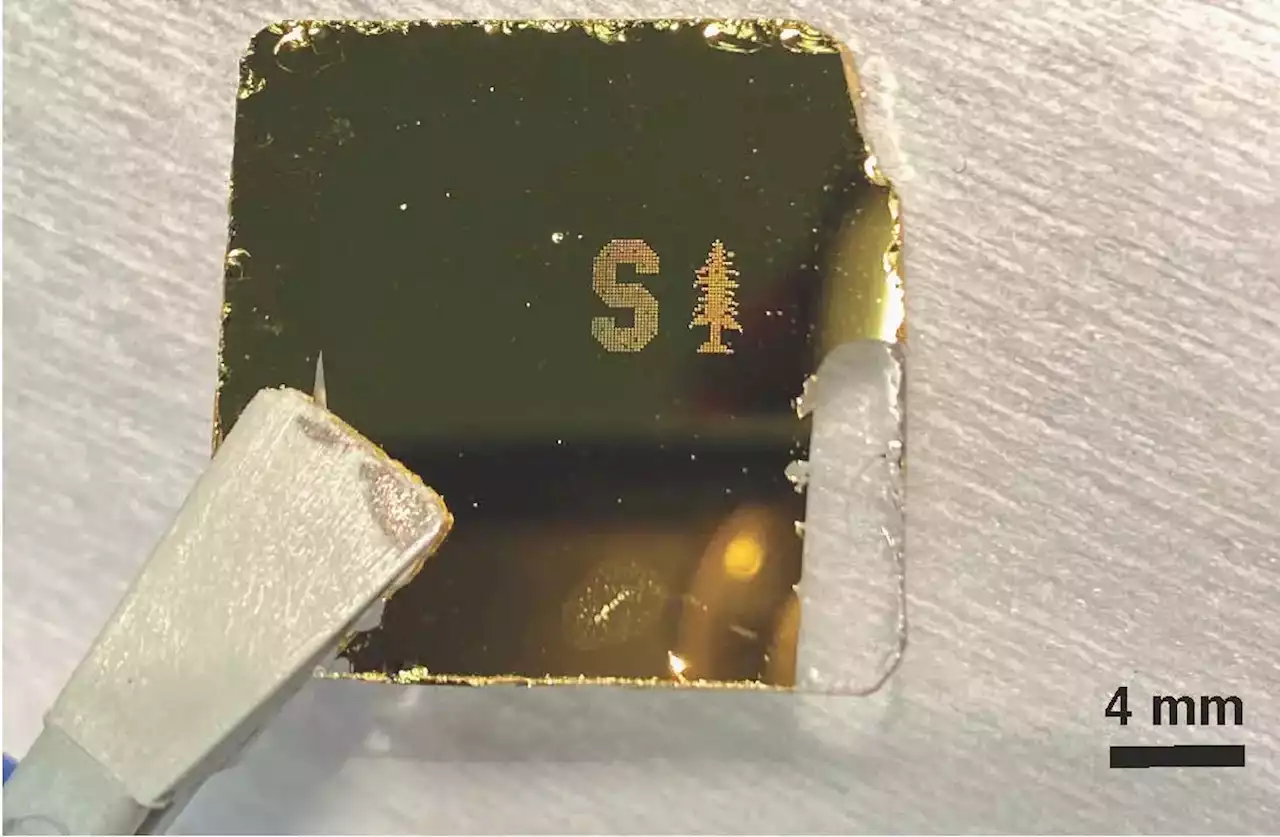A creative integration of AI-assisted imaging with the technology of an outdated inkjet printer results in a more efficient and cost-effective method for detecting bacteria in substances such as blood and wastewater. By shining a laser on a drop of blood, mucus, or wastewater, the reflection of t
, and more,” said Jennifer Dionne, an associate professor of materials science and engineering and, by courtesy, of radiology at
Details of the printed dots on a gold-coated slide where false coloring in the close-up of a single dot shows red blood calls in red andbacteria in blue. The researchers also printed onto an agar-coated slide to show how the dots fare under incubation.
“The key to separating bacterial spectra from other signals is to isolate the cells in extremely small samples. We use the principles of inkjet printing to print thousands of tiny dots of blood instead of interrogating a single large sample,” explained co-author Butrus “Pierre” Khuri-Yakub, a professor emeritus of electrical engineering at Stanford who helped develop the original inkjet printer in the 1980s.
“It’s an innovative solution with the potential for life-saving impact. We are now excited for commercialization opportunities that can help redefine the standard of bacterial detection and single-cell characterization,” said senior co-author Amr Saleh, a former postdoctoral scholar in Dionne’s lab and now a professor at Cairo University.
United States Latest News, United States Headlines
Similar News:You can also read news stories similar to this one that we have collected from other news sources.
 Researchers develop new bacteria coating to protect buildings from erosionResearchers from the University of Hertfordshire used bacteria to develop a new protective limewash mixture that could protect buildings from erosion.
Researchers develop new bacteria coating to protect buildings from erosionResearchers from the University of Hertfordshire used bacteria to develop a new protective limewash mixture that could protect buildings from erosion.
Read more »
 Researchers develop soft robot that easily transitions from land to seaResearchers at Carnegie Mellon University were able to develop soft robots that have the ability to shift from sea to land easily.
Researchers develop soft robot that easily transitions from land to seaResearchers at Carnegie Mellon University were able to develop soft robots that have the ability to shift from sea to land easily.
Read more »
 How a Beam of Pellets Could Blast a Probe Into Deep SpaceA new propulsion system, featuring one space vehicle firing thousands of tiny metallic pellets at its partner, could transform exploring beyond our solar system.
How a Beam of Pellets Could Blast a Probe Into Deep SpaceA new propulsion system, featuring one space vehicle firing thousands of tiny metallic pellets at its partner, could transform exploring beyond our solar system.
Read more »
 Researchers find efficient way to turn vegetable oil industry waste into powerA new cost-effective anode catalyst can improve the power generation performance of microbial fuel cells treating vegetable oil industry wastewater.
Researchers find efficient way to turn vegetable oil industry waste into powerA new cost-effective anode catalyst can improve the power generation performance of microbial fuel cells treating vegetable oil industry wastewater.
Read more »
 That tantrum at Stanford Law School and what to do about itAnother day, another tantrum at one of the nation’s top law schools. On Thursday, law students at Stanford (the No. 2 law school in the country) followed the example set by their peers at Yale (No. 1) by shouting down U.S. Circuit Court Judge Kyle Duncan, preventing him from delivering a lecture to…
That tantrum at Stanford Law School and what to do about itAnother day, another tantrum at one of the nation’s top law schools. On Thursday, law students at Stanford (the No. 2 law school in the country) followed the example set by their peers at Yale (No. 1) by shouting down U.S. Circuit Court Judge Kyle Duncan, preventing him from delivering a lecture to…
Read more »
 Stanford law dean faces student revolt after apologizing to Trump-appointed judgeStudents at Stanford Law School staged a protest against Dean Jenny Martinez on Monday after she apologized for the disruption of an event featuring federal appellate court Judge Kyle Duncan last week.
Stanford law dean faces student revolt after apologizing to Trump-appointed judgeStudents at Stanford Law School staged a protest against Dean Jenny Martinez on Monday after she apologized for the disruption of an event featuring federal appellate court Judge Kyle Duncan last week.
Read more »
